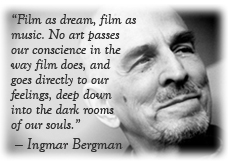Eisenstein: The Sound Years (Ivan the Terrible Parts 1 & 2 / Alexander Nevsky) (The Criterion Collection)
Manufacturer Description
A biography of the first czar of Russia was the final movie project of the great Sergei Eisenstein's life. It would be his undoing, as Stalin was not pleased with part II of this epic. But Ivan the Terrible, Part I still stands as a magnificent, rich, and strange achievement. This is a "composed" film to make Hitchcock look slapdash; every frame is arranged with the eye of a painter or choreographer, the mise-en-scène so deliberately artificial that even the actors' bodies become elements of style. (They complained about contorting themselves to fit Eisenstein's designs.) If you don't believe movies can be art, this could be (and has been) dismissed as ludicrous. But Eisenstein's command of light and shadow becomes its own justification, as the fascinating court intrigue plays out in a series of dynamic, eye-filling scenes. This is not a political theorist, but a director drunk on pure cinema.
Part II continues with the struggle for power and the use of secret police, a controversial segment that caused the film to be banned by Stalin in 1946 (the film was not released until 1958). The predominantly black-and-white film features a banquet dance sequence in color. Obviously the two parts must be viewed as a whole to be fully appreciated. Many film historians consider this period in Eisenstein's career less interesting than his silent period because of a sentimental return to archaic forms (characteristic of Soviet society in the '30s and '40s). Perhaps it was just part of his maturity.
Alexander Nevsky (1939), Eisenstein's landmark tale of Russia thwarting the German invasion of the 13th century, was wildly popular and quite intentional, given the prevailing Nazi geopolitical advancement and destruction at the time. It can still be viewed as a masterful use of imagery and music, with the Battle on the Ice sequence as the obvious highlight. Unfortunately, the rest of the film pales in comparison. A great score by Prokofiev was effectively integrated by the Russian filmmaker, but stands on its own merit as well.
Key Product Details
- Number Of Discs: 1
- Run Time: 292 (Minutes)
- UPC: 037429149126
- Director0: Dmitriy Vasilev



![Sergei Eisenstein: Double Feature (Battleship Potemkin & Strike) [Blu-ray] Sergei Eisenstein: Double Feature (Battleship Potemkin & Strike) [Blu-ray]](http://ecx.images-amazon.com/images/I/516LRr0NS4L.01_SL120_.jpg)


![Battleship Potemkin [Blu-ray] Battleship Potemkin [Blu-ray]](http://ecx.images-amazon.com/images/I/61KwHK2c8kL.01_SL120_.jpg)



